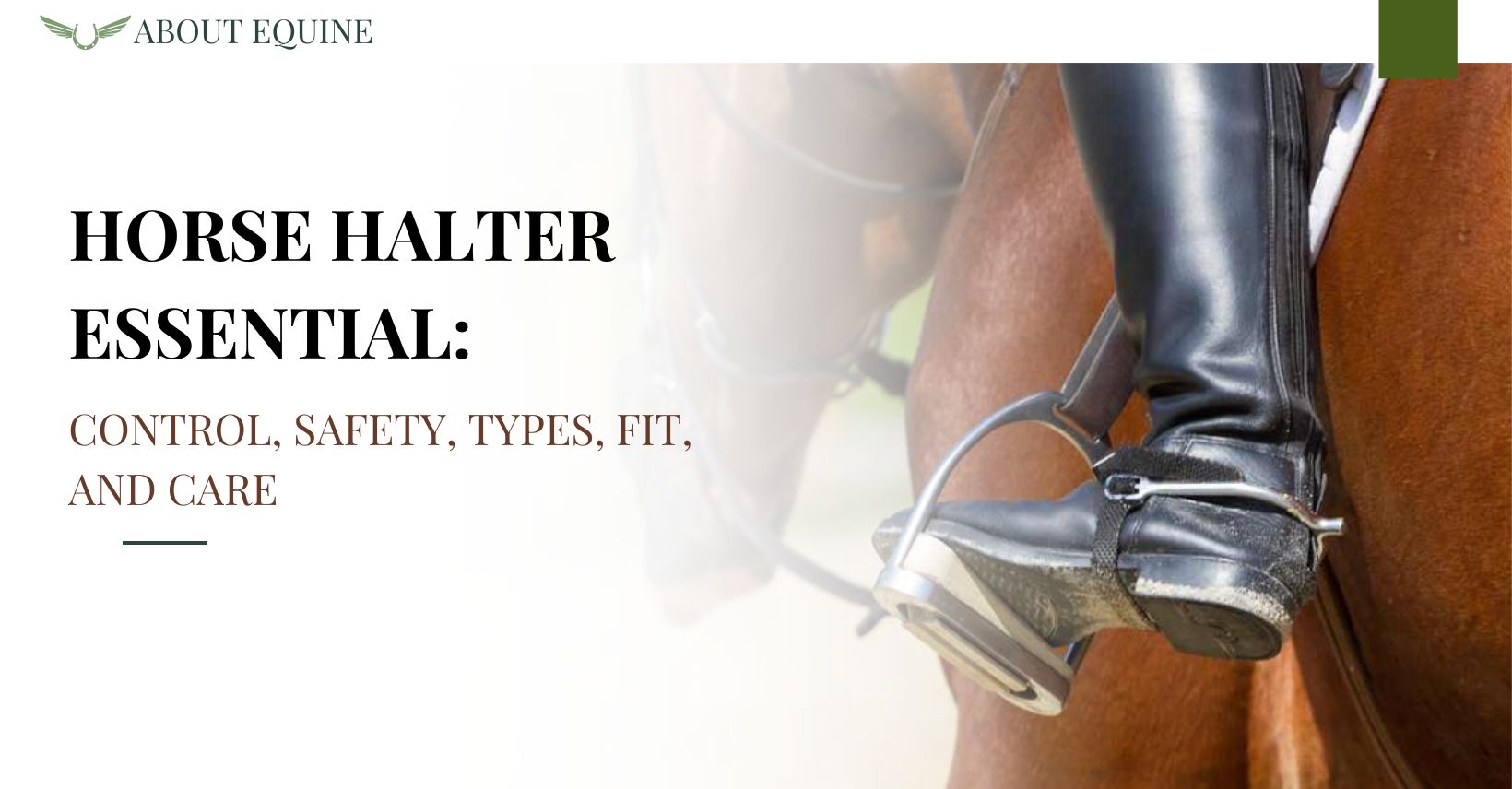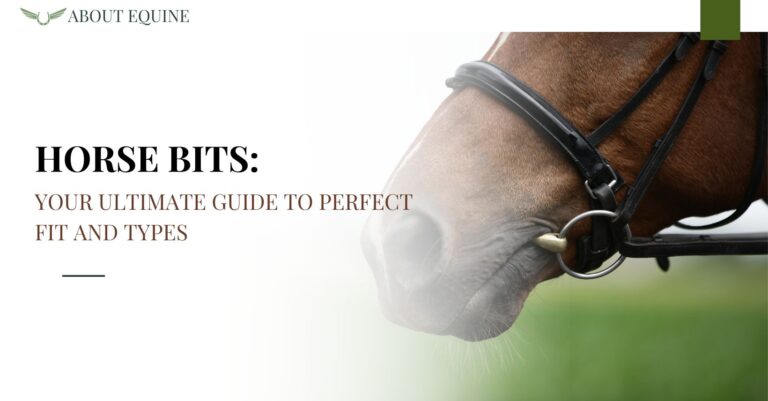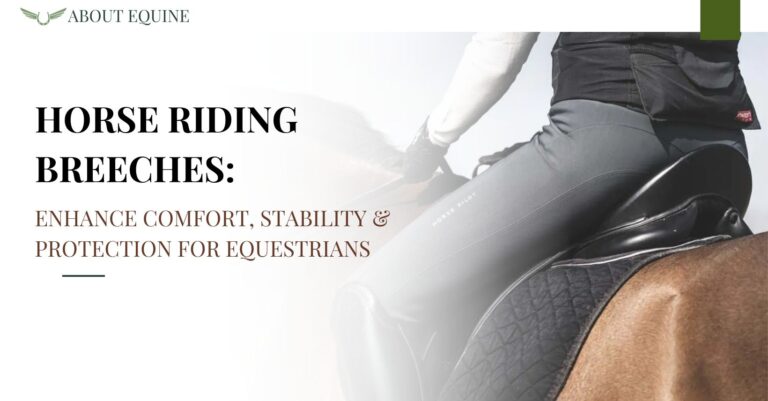Horse Halter Essential: Control, Safety, Types, Fit, and Care
Are you considering adding a horse halter to your stable but need to know its importance?
We discuss why a horse halter is essential for controlling and handling horses, ensuring their safety and security, and aiding in grooming and training.
We explore the different types of horse halters available, factors to consider when choosing one, how to fit and care for a halter properly, and the overall significance of having one in your stable.
Saddle up, and let’s get started!
Why is a Horse Halter Essential for Your Stable?
A horse headcollar is an essential piece of equipment for any livery. It is a vital tool for horse control, training, and management. It ensures safety, facilitates training, and aids in the overall management of these magnificent animals.
One key aspect of horse headcollars is their role in providing control during various activities such as leading, tying, grooming, and veterinary care. By using a well-fitted headcollar, handlers can effectively guide the horse without causing discomfort or injury.
The right type of headcollar can contribute to the safety of both the horse and the handler. In challenging situations, such as loading a horse onto a lorry or handling a fractious animal, a sturdy headcollar can prevent accidents and help maintain a calm environment.
Control and Handling of Horses
Effective control and handling of horses are important aspects of horsemanship, where the right headcollar plays a key role in ensuring proper communication and control over the horse’s behaviour and movements.
Specialised headcollars are designed to provide control and comfort for the horse, essential for a positive training experience. By using a well-fitted headcollar that respects the horse’s anatomy, trainers can improve their communication signals and ensure their cues are clear and effective.
This, in turn, helps reinforce desired behaviours and correct unwanted ones. Specialised headcollars also aid in establishing boundaries and building trust between the horse and the handler, fostering a healthy relationship based on respect and communication.
Safety and Security
Safety and security are paramount in all equine activities, and choosing the right headcollar, such as breakaway headcollars made of durable materials, can greatly enhance the safety measures for both the horse and the handler.
Properly fitted headcollars provide control during handling and leading and play a critical role in ensuring the horse’s well-being.
Breakaway headcollars are designed to release under pressure, reducing the risk of injury in emergencies or accidents.
These headcollars, made of high-quality materials like nylon or leather, offer durability and strength, making them reliable for various equine interactions, whether in the stable, during training sessions, or during competitions.
Grooming and Training
Horse headcollars play a vital role in grooming and training, providing comfort and a proper fit essential for the horse’s well-being. A well-fitted headcollar reduces discomfort and chafing, enhancing the grooming experience and making the horse more enjoyable and stress-free. Comfort encourages the horse to cooperate during grooming, fostering a positive association.
Durability is also key for longevity and safety. High-quality headcollars withstand daily wear and tear, remaining reliable and secure during training. This reliability builds trust between horse and handler, improving communication and training outcomes. Considering these aspects, choosing the right type for your needs is important. Comprehending the options available can help you make the best choice for your horse.
What are the Types of Horse Halters?
There are various types of horse headcollars available in the market, including nylon, leather, rope, and specialised headcollars. Each offers unique features and benefits suited to different purposes and preferences.
Nylon headcollars are popular for their durability and affordability, making them ideal for everyday use and training. On the other hand, leather headcollars are known for their classic look and quality construction, often favoured for shows and events where appearance matters.
Rope headcollars provide a gentler form of control and are commonly used in natural horsemanship practices. Specialised headcollars, such as breakaway or padded headcollars, cater to specific needs like safety or comfort, emphasising the importance of choosing the right headcollar for your horse’s well-being.
Flat Halters
Flat halters are traditional halters that provide basic control and are commonly used in various equestrian activities. They come with standard fittings and are essential horse handling and management equipment.
- Flat halters are versatile and suitable for leading, tying grooming, and other basic tasks.
- They are often used during ground training, lunging, and turnout, providing a means of control while allowing the horse freedom of movement.
These halters are designed with simplicity in mind. They consist of a headpiece, cheekpiece, noseband, and throatlatch. Their straightforward design makes them easy to put on and take off, making them ideal for everyday use.
Rope Halters
Rope halters are popular for training. They offer precise control and communication with the horse. These halters often come with ropes and accessories that aid in various training exercises.
One key benefit of using rope halters in horse training is their ability to provide a gentle yet effective means of control. The design of rope halters ensures pressure points are evenly distributed, making them comfortable for the horse. By including training ropes and accessories with rope, halters enhance the training experience by allowing trainers to easily guide and direct the horse during exercises.
Breakaway Halters
Breakaway headcollars are designed with safety in mind, featuring quick-release mechanisms to prevent accidents and injuries. Their quality ensures reliable performance and peace of mind for both the horse and the handler.
These headcollars are crafted with durable materials such as high-quality leather or nylon, ensuring they can withstand daily use in various equestrian activities. The stitching and hardware are designed to meet stringent quality standards, guaranteeing that the breakaway headcollars will hold up even in the most demanding situations.
Along with their durability, breakaway headcollars come in various sizes and styles to suit different horses and preferences. Whether you’re out on a leisurely hack or participating in competitive events, these headcollars provide a secure fit without compromising safety.
Show Halters
Show halters enhance horses’ presentation in competitions and shows. They feature exquisite designs and are often customised with monograms.
They blend functionality with visual appeal to highlight the horse’s beauty. The specialised features include intricate stitching patterns and high-quality materials created precisely for durability and style. Riders often add monogrammed details or personalised colours, adding elegance and sophistication to the horse’s appearance.
Choosing the right halter involves thoughtful consideration, ensuring it meets the horse’s needs and enhances performance. Let’s analyse what you should keep in mind.
What Factors to Consider when Choosing a Horse Halter?
When selecting a horse headcollar, key factors include the material’s durability, the fit for the specific horse, and the comfort level it provides during various activities. The right headcollar should meet the horse’s needs while ensuring longevity and comfort.
- Material durability is important as it determines how well the headcollar can withstand the rigours of daily use and outdoor conditions. A high-quality headcollar made from durable materials like nylon or leather can last longer and perform better.
- Proper fit is essential to prevent discomfort, chafing, or rubbing on the horse’s sensitive skin. A well-fitted headcollar ensures it stays securely in place without causing undue pressure points.
- Comfort plays an important role in the horse’s overall well-being and performance. A comfortable headcollar allows the horse to move freely, breathe easily, and relax during handling or training sessions.
Material and Durability
The material and durability are critical factors to assess when choosing a horse headcollar. Opt for high-quality materials and durable construction to ensure the headcollar can withstand the rigours of daily use and provide long-lasting performance.
Undoubtedly, the material quality of creating a horse headcollar directly impacts its functionality and longevity. Investing in premium-grade materials such as leather, nylon, or rope can greatly enhance the headcollar’s durability and overall performance. Leather headcollars, known for their classic appearance and strength, offer a traditional touch while ensuring resilience over time. On the other hand, nylon headcollars are praised for their easy maintenance and versatility.
Fit and Comfort
Ensuring a horse halter’s proper fit and comfort is important for the horse’s well-being and behaviour. A well-fitted halter should provide comfort without causing undue pressure or discomfort to the horse.
When a halter fits well, it prevents chafing and rubbing, which can lead to skin irritations and sores. A halter that is too tight can restrict the horse’s movement and breathing, causing unnecessary stress. On the other hand, a loose halter may slip or twist, creating discomfort and potential safety hazards.
The right fit also maintains the horse’s focus and cooperation during handling and training sessions. A comfortable halter allows the horse to relax and respond more positively to the rider’s cues, promoting better communication and overall performance.
Adjustability and Versatility
Opt for horse headcollars that offer adjustability and versatility to cater to different contexts and specific needs. Adjustable headcollars can accommodate various horse sizes and requirements, providing flexibility in usage.
One key benefit of adjustable and versatile horse headcollars is their ability to accommodate a wide range of horse sizes, from ponies to draft horses. This adaptability ensures that the headcollar can be customised to provide a comfortable and secure fit for each horse, regardless of size or breed.
The versatility of these headcollars allows for easy adjustments to fit different riding disciplines or training purposes. Whether you are working with a high-energy jumper or a calm trail horse, the ability to customise the headcollar to fit their specific needs is essential for their comfort and safety.
Investing in a quality adjustable headcollar benefits the horse and the rider. Knowing that the equipment is customised to the horse’s unique requirements provides peace of mind.
Purpose and Use
When selecting a horse headcollar, consider its purpose and use. Different designs and functions match various needs, from training to show to ensure the headcollar fits its intended use.
A headcollar with adjustable features and soft padding provides comfort during long training sessions. A sturdy, durable headcollar is required for outdoor adventures or trail riding.
In shows or competitions, sleek, elegant designs enhance the horse’s appearance and complement the presentation. Choose headcollars with secure fastenings and easy-to-use mechanisms for quick adjustments during grooming or tack changes.
With the right headcollar chosen, ensuring a proper fit is important to your horse’s comfort and safety.
How to Properly Fit a Horse Halter?
Ensuring a horse headcollar fits properly is vital for comfort, safety, and communication. A high-quality headcollar must provide comfort and apply appropriate pressure without causing discomfort. To avoid rubbing, when fitting a headcollar, ensure the noseband sits about two fingers’ width below the cheekbone.
The headpiece should rest behind the ears without pulling or pinching, and the throat strap should be snug, allowing the horse to breathe and swallow comfortably.
Look for durable materials, secure buckles, and smooth edges to prevent chafing. Regularly check and adjust the fit to avoid pressure points and maintain the horse’s well-being. Proper maintenance of the headcollar ensures its longevity and effectiveness, which leads us to another important aspect of horse care.
How to Care for Your Horse Halter?
Proper care and maintenance of a horse halter are vital to extend its lifespan and ensure consistent performance. Regular cleaning, material inspection, and timely repairs preserve the halter’s quality and functionality.
When cleaning, use mild soap and warm water to gently scrub away dirt and grime, avoiding harsh chemicals or abrasive cleaners that could harm the material. After cleaning, dry the halter thoroughly to prevent mildew or mould growth.
Regularly inspect the stitching and hardware for signs of wear and tear, as these can weaken the halter. For leather halters, apply conditioner to keep the leather supple and prevent drying. Promptly repairing simple issues like broken clips or buckles can prevent further damage and maintain the halter’s integrity for longer use.
These maintenance tips are about prolonging the halter’s life and highlight why having a reliable horse halter in your stable is essential.
Importance of Having a Horse Halter in Your Stable
Having a horse headcollar in your stable is crucial for ensuring efficient handling, safety, and training of horses. The benefits of using a suitable headcollar extend to improved communication, behaviour management, and the overall well-being of the horses.
Regarding horse management, horse headcollars are a fundamental tool for equine enthusiasts. They provide a means to guide and control the movements of these majestic animals, fostering a sense of trust and respect between the horse and its handler. Properly fitted headcollars ensure the safety of both the horse and the handler and facilitate effective training sessions.
By selecting the right type of headcollar, horse owners can customise their handling approaches to suit their equine companions’ individual needs and personalities. Different headcollars offer various levels of control and comfort, allowing for versatility in training techniques and communication styles.



